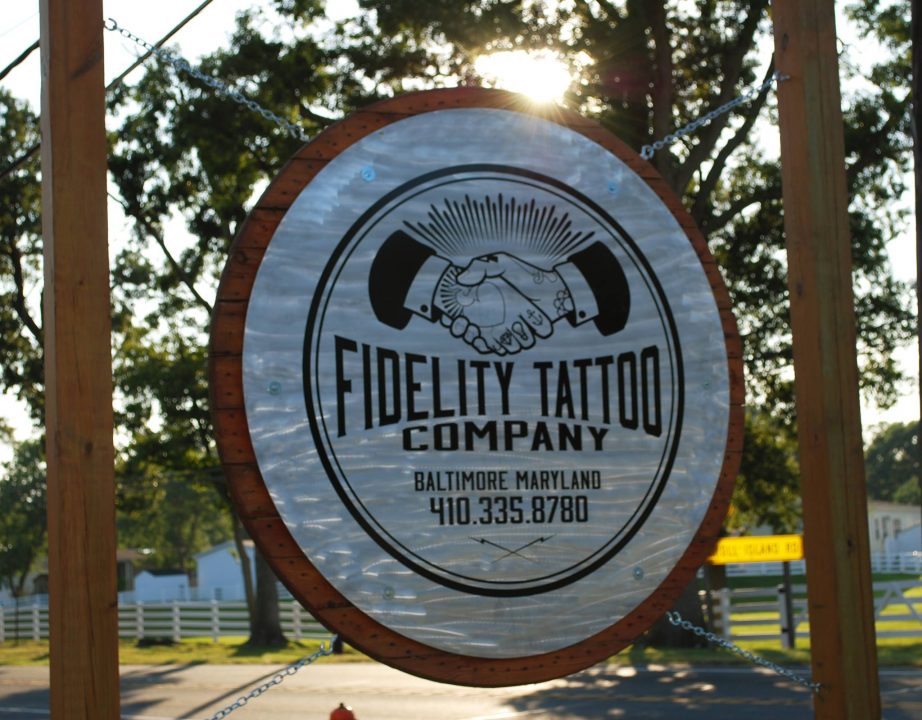The views expressed in this article are the views of the authors.
There is only one woman visible at the Baltimore Tattoo Museum, and even she is accompanied by a man. The surrounding environment is not that welcoming either, at least not to women. With the persistent buzzing of tattoo needles, hard, deep rap music and of course, an overwhelming male presence that constitutes the majority of the staff workers, it is hard to take a breath.
Jackie, a female tattoo artist employed at Baltimore Tattoo Museum, has firsthand experience with discrimination against women in the tattoo industry, “I’ve endured things like ‘We’ll hire you as a counter girl and see where this goes,’” she said. “That’s fine, but I don’t want to do that, I want to learn.” She has also received other comments from professionals like, “Oh, I don’t want to teach a woman.”
This discrimination may lie within the cultural expectation for women to remain ‘pure’ for their entire lives, and tattoos are often viewed as something that stains a person, a form of rebellion or something that makes too much of a political statement. A whopping 60 percent of people find those with tattoos unattractive.
Because tattoos are more geared towards men, it is not surprising that it is difficult for women to enter this art industry, but this uninviting behavior is interesting considering women are readily accepted into the fine art community.
All tattoo artists have different experiences getting into the industry. Whether their tattooing begins as a hobby or a life goal, women still face an unfair exclusion in the tattoo industry, including those who have been working for several years in the city of Baltimore. When mentioning other female tattoo artists in the area, Jackie commented, confused, “There are other lady tattooers in Baltimore? Where are they? I’m glad there are more around.”
Enter Fidelity Tattoo Co. and its artistry staff comprised entirely of women.
The bright colored walls and the welcoming attitude of everyone at the front desk make for a much more comfortable feel in this particular tattoo parlor. But even these women are not immune to the hardships present in their field.
Emily Aitken, one of the tattoo artists employed at Fidelity, admits, “I think sometimes clients don’t initially believe that I’m a tattooer or they just assume I’m not a tattooer at first, occasionally.”
Others are a little more bothered by clients automatically assuming their position is receptionist. And even after realizing that these female tattoo artists are in fact the ones who will be giving the tattoo, some clients still treat women in inappropriate ways. Jayne Steiger, another tattoo artist at Fidelity, recounts, “… I feel like a lot of clients, especially people who walk in and don’t know me, they tend to be pushier with me than they would with a male tattoo artist or hit on me or be disrespectful.”
Not every woman is going to experience the same levels of discrimination as others. Some will have very little exposure, and some will be completely barred from certain parlors. It is difficult to predict what will occur. But the fact that it is even a possibility is distressing.
This brings into question, why exactly has this specific field been deemed masculine? Art is often viewed as feminine, yet tattooing defies this belief with its oversaturation of men and, at times, even the conscious exclusion of prospective female tattoo artists.
Sixty one percent of fine art degrees were awarded to women in 2015, and out of the 21,000 tattoo parlors currently present in the United States, only about one-third of the artists are women. This points to an issue that perhaps has been present since the beginning of tattoos. The early history of tattooing was only afforded to men, as women were often turned away and discouraged to pursue the art form, according to Jackie.
Ashleigh, the owner of Fidelity Tattoo Co., explains, “I know when getting into the industry, women weren’t super prevalent but just kinda start trying to trickle in. I definitely got, don’t wanna say shunned but definitely not if I were a dude coming in with the same portfolio, definitely didn’t get as much respect.” And her entrance into this field was only ten years ago. Given the length of time that tattooing has been around, it may take many more years until the ratio of female to male artists is at least somewhat equal.
At the end of the day, tattoo artistry is founded on the deep passion, respect and appreciation for art. It can be disheartening for prospective female tattoo artists when the industry, overshadowed by long-held gender biases, is unable to recognize this shared interest among everyone.
“It’s either one or the other. You’re either not respected or not taken as seriously because you’re female. Or you’re looked at as a piece of studio candy,” says Ashleigh.
Ceyda Baysal and Jamie Denton contributed to this article.
Photo Credit: Fidelity Tattoo Co. tattoo parlor is located in Middle River, MD. Photo courtesy of Fidelity Tattoo Co. Facebook.

